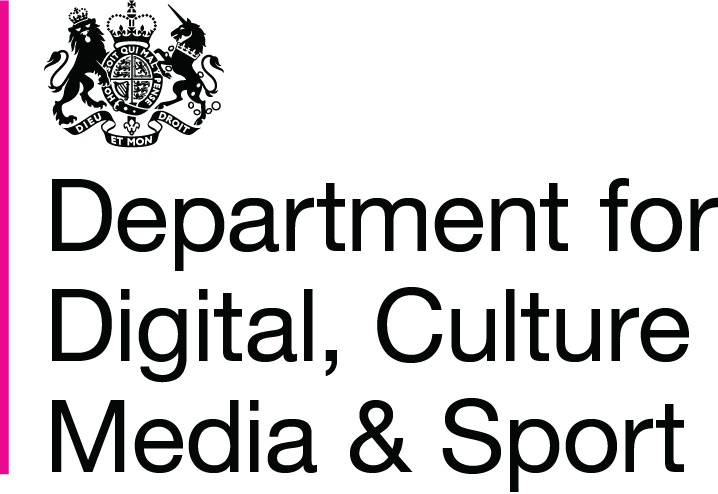 CA Technologies is a tech company that takes diversity and inclusion issues very seriously.
CA Technologies is a tech company that takes diversity and inclusion issues very seriously.
The software vendor has understood for some time that focusing on this area puts it in a stronger position to attract and retain the best possible talent in a market riven by skills shortages.
As a result, about four years ago it set up a global inclusion programme called Thrive in order to boost internal awareness of the issue and “build momentum” behind it throughout the organisation, as Sue Henley, the company’s Head of Talent Development, Education & Diversity for Europe, the Middle East and Africa (EMEA), puts it. She explains:
It’s about changing the way the culture behaves to attract the best, keep them here and develop them in a way that meets their career goals. The idea is that, if you always do what you’ve always done, you’re always going to get what you’ve always got, and you’ll never affect change.
Although gender is the topic de rigueur in diversity circles at the moment, Thrive actually covers a much broader base by including the following “Employee Network” categories: Ethnicity; Generational; LGBTA (lesbian, gay, bi-sexual, transsexual/transgender and allies), and Capability (a contraction of CA and disability). Henley says:
These Networks create a level of engagement that would be difficult to achieve otherwise. They show the level of investment that we’re making as an organisation in this area and that we’re happy to spend time with people to show them that we care what they think. So really it’s less about the money you spend and more about the attitude you put out there.
As for how the Networks are organised, Henley says that the structure, rules and governance for each one are the same, with each having its own executive sponsor who is also a member of the leadership team. These sponsors provide direction and act as the Network’s champion at a senior level.
They are also supported by a Network leader. Network leaders head the group up and manage tactical day-to-day activities. They also undertake planning on how to meet the strategic goals that the team has set for itself and feed this information back to their sponsor, who in turn folds it into CA’s overall diversity strategy.
Network leaders volunteer for the role, which is a popular way of building profile and developing management skills. They are chosen by Henley and the Network sponsor concerned and serve for an unspecified term, which depends on “how much they have to do in terms of fulfilling their goals, and where they’re at”.
Generational and BAME matters
And this strategy appears to have paid off so far. Last July, the company won an Intergenerational Working Award for its equality and inclusion efforts from the UK’s Employers Network for Equality and Inclusion.
Initiatives undertaken by the Generational Employee Network here included creating, implementing and supporting a plan of action to address the needs of each generation, ranging from encouraging members of Generation Z to consider a career in technology to facilitating knowledge transfer from Baby Boomers and members of Generation X.
But in November this year, CA was also named as one of the UK’s “Best Employers for Race” by Business in the Community, a charity that promotes responsible business practices.
The unranked listing, which identified the country’s 65 best employers for Black, Asian and Minority Ethnic (BAME) people, was created in line with one of the recommendations made in Baroness McGregor-Smith’s Review of race issues in the workplace that was released in February.
Winners were required to show progress in creating an inclusive workplace culture and also that they could demonstrate their activities in the areas of leadership, progression and/or recruitment were paying off for BAME workers.
Examples of such work at CA included the fact that a healthy 50% of Ethnicity Employee Network members were either meeting their personal development goals or had been promoted. They were also encouraged to use social media and blogs to raise their profile, tell their story and become visible role models for others.
In statistical terms, meanwhile, some 19% of the vendor’s UK workforce are members of BAME communities, up from 16% in 2016 and significantly higher than the cross-industry average of 11%. But in the US, which is more developed in this area, BAME representation is up at around 25%, with 15% of employees being Asian, 5% Hispanic, 4% Black and 1% of mixed heritage.
Henley believes such transparency in data terms is important, although she also points out that collecting such information is illegal in some European countries, which makes it difficult to provide an accurate global view of the situation. But she continues:
Statistics help us to understand where we’ve come from and also to set where, in aspirational terms, we’d like to go to – and develop a strategy around that. So for each Network, we’ve got a full events schedule and a full communications plan and strategy that we highlight and communicate about throughout the year.
We’ve also developed an intranet site to talk about stats and our mission and to showcase personal stories in order to increase awareness of the issues. And we also run a reverse mentoring programme, which helps to highlight to senior managers the challenges that people face because it’s difficult to feel what it means to be you unless someone walks in your shoes.
The value of targets and data
Moreover, although Henley is not a “huge believer” in setting inclusion targets, she says that some are likely to make their presence felt for the first time next year. She explains the rationale:
I don’t disagree with them – there’s a time and place and I think it’s now getting to that time, although I’ve resisted for a while. Targets can change the dynamic in management terms across the organisation, but I don’t want them to become just a tick box thing without changing anyone’s behaviour. On the other hand, without targets, you can end up with little movement so you do need to have some numbers in there.
But there are other benefits. As Henley says, it is becoming best practice in the diversity space to introduce them, not least because many organisations are seeing concrete benefits:
Harder targets are good for transparency and show a level of commitment to what you’re doing. But you really have to work out what they should look like in your own organisation, and from a tech industry and broader perspective too.
Other advice based on lessons learned to date includes the importance of using data to back up and justify your activities. Henley explains:
Data monitoring is key – it’s very important to enable us to engage the business and employees about why we’re focusing on this or that. Some people will say ‘it’s not an issue’ as it’s had no impact on them, but you can start to challenge that attitude if you have the data to prove your point.
Another consideration is maintaining a “solid and consistent focus” due to the slow pace of cultural change. Henley says:
Cultural change is like turning a big ship – you can’t do it overnight and if you’re looking for a quick fix, you’re in the wrong game. But it’s a big issue if you’re trying to engage leaders and managers, especially in tech where there’s a lot of rapid change. People may become impatient if they don’t see change till further down the line and so resilience is key.
My take
A recent report from the UK’s Chartered Institute of Personnel and Development revealed that 20% of BAME employees across all industries believe that discrimination has played a role in their lack of career progression. As a result, two out of five say their career has failed to meet their expectations, particularly if they are from black (44%) or mixed heritage (42%) backgrounds.
The figure compares with only 10% of white British colleagues who complain that discrimination has been a career-limiting occurrence and 31% who believe their career expectations have not been met.
But because BAME workers face more barriers than other staff in advancing in their careers, they – perhaps unsurprisingly – show a more active desire to experience interventions ranging from coaching to mentoring.
Interestingly though, they also feel that having a senior role model in their organisation, combined with a greater diversity of people at senior levels, are likely to be the most significant factors in furthering their career – useful insights indeed for any organisation that is sincere about ensuring their diversity and inclusion work makes a mark.
First published as on diginomica by Cath Everett December 13, 2017








